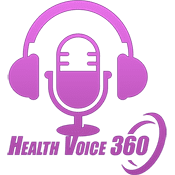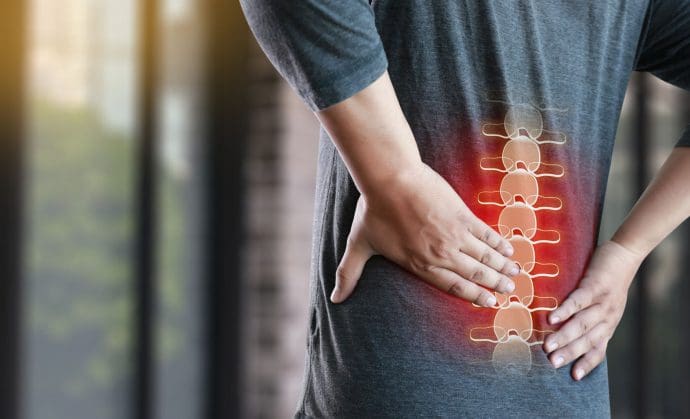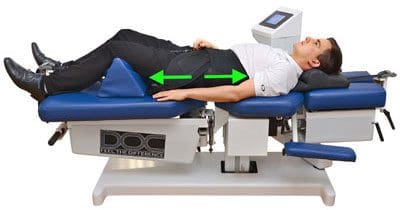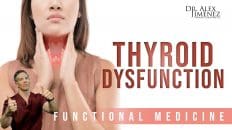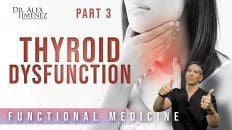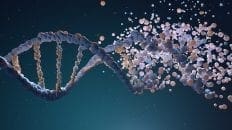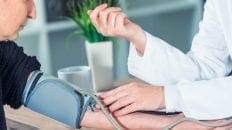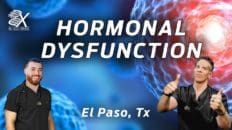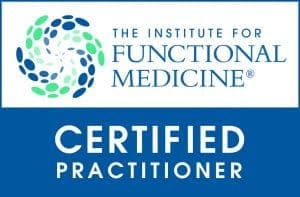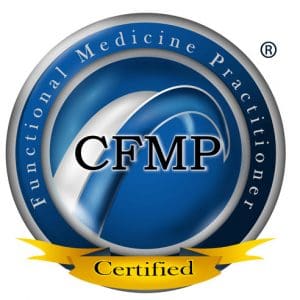Table of Contents
Introduction
The body makes sure that the spine is keeping it upright as the body allows the spine to twist, bend, and turn in different positions. When the body suffers from an injury, the immune system starts to take effect and begins to heal the body naturally in the affected areas. When the back gets injured from an accident or injured, the spinal disc in the spine will get damaged and lead to chronic issues that can cause a person to be miserable if it is not treated right away. However, there are non-surgical treatments that can relieve back pain symptoms and cause immense relief to the individual. In this article, we will be looking at what causes chronic back pain, its symptoms, and how non-surgical decompression can provide relief for chronic back pain. By referring patients to qualified and skilled providers specializing in spinal decompression therapy. To that end, and when appropriate, we advise our patients to refer to our associated medical providers based on their examination. We find that education is the key to asking valuable questions to our providers. Dr. Alex Jimenez DC provides this information as an educational service only. Disclaimer
Can my insurance cover it? Yes, it may. If you are uncertain, here is the link to all the insurance providers we cover. If you have any questions, please call Dr. Jimenez at 915-850-0900.
What Causes Chronic Low Back Pain?
Mostly everyone would see a doctor or miss a couple of days at work due to having some back pain that causes them to be in pain and not do their daily activities due to it being common. Research studies have shown that back pain can range from a dull constant ache to a sudden, sharp pain that can be very mild or severe depending on the injury. The causes of back pain can be from an accident that a person went through, lifting heavy objects, or can develop when a person ages naturally when the spinal disc is losing fluid and nutrients.
Two types of back pain can affect a person’s way of life depending on how severe the injury is. Acute back pain can last from a few days to a few weeks and can be resolved with a few days of self-care, and a person can take it easy with light activity. Chronic back pain is when the pain continues for about 12 weeks or more, causing it to persist where the individual needs medical treatment to relieve the pain. Other research studies have found many disorders like inflammatory disorders, trauma, DDD (degenerative disc disease), and other chronic disorders that can cause chronic back pain symptoms. Chronic back pain can also cause significant rates of disability while being a contributor to morbidity and mortality in a person.
The Symptoms
Since chronic pain is often defined as persisting pain that goes beyond the normal healing time, research studies have shown that chronic pain can cause a significant impact on musculoskeletal conditions like chronic back pain. The presence of chronic pain can create more chronic issues that a person is experiencing. Other research studies have stated that the symptoms that chronic low back pain causes in a person include:
- Dull aching pain
- Traveling pain in the buttocks, legs, & feet
- Worsen pain after prolonged sitting
- Pain feels better after shifting positions
- Wake up with pain and feel better after moving around
An Overview On Chronic Low Back Pain-Video
Research studies have shown that chronic low back pain is a chronic pain syndrome in the lower back region of the spine that can last for at least three months. Chronic low back pain is often the second leading cause of disability worldwide. It is influenced by psychological factors like stress, depression, or anxiety that can impact a person’s way of life. Other research studies have shown that low back pain can cause pain, muscle stiffness, or tension localized below the costal margin and above the inferior gluteal fold, characterized by sciatica symptoms. Chronic low back pain can be persistent for more than 12 weeks. It can cause immense individual pain, especially if the causes to have chronic low back pain have been associated with individual and workplace factors that cause the transition to chronic low back pain.
Non-Surgical Decompression For Chronic Low Back Pain
There are ways that many individuals can find relief after suffering from chronic low back pain and don’t require surgery. Non-surgical decompression therapy is where the individual is lying on a traction machine, and their spine gets a gentle stretch to relieve the compressed spinal disc’s pressure. Research studies have shown that non-surgical decompression therapy creates negative intradiscal pressure on the spine, allowing the herniated disc material to be pulled back into the spinal disc. Non-surgical decompression therapy also promotes the passage of healing nutrients back into the disc while fostering a better healing environment for the spine.
Many individuals who have non-surgical decompression therapy have reported at least 90% of improvement in back pain and have a better function when doing daily activities. Research studies have shown that spinal decompression therapy and general traction effectively improve the pain and disability of chronic low back pain issues for individuals suffering from intervertebral disc herniation and getting back their quality of life.
Conclusion
Chronic low back pain is caused by heavy lifting, injury, age, or accidents that cause the spinal disc to be compressed under immense pressure. Sometimes the pain levels can range from mild to severe, causing pain from the lower back to the legs and feet. When a person is suffering from chronic low back pain, it can cause them to be dysfunctional and ruin their daily lives. Non-surgical treatments like spinal decompression can help alleviate chronic back pain symptoms by gently stretching the spine and allowing the nutrients back to the spine. This will relieve the person’s spine and alleviate the painful symptoms causing back pain, causing the person to be pain-free and continue on their wellness journey.
References
Allegri, Massimo, et al. “Mechanisms of Low Back Pain: A Guide for Diagnosis and Therapy.” F1000Research, F1000Research, 28 June 2016, https://www.ncbi.nlm.nih.gov/pmc/articles/PMC4926733/.
Casiano, Vincent E, et al. “Back Pain – Statpearls – NCBI Bookshelf.” StatPearls [Internet]. Treasure Island (FL), StatPearls Publishing, 22 Feb. 2022, https://www.ncbi.nlm.nih.gov/books/NBK538173/.
Choi, Jioun, et al. “Influences of Spinal Decompression Therapy and General Traction Therapy on the Pain, Disability, and Straight Leg Raising of Patients with Intervertebral Disc Herniation.” Journal of Physical Therapy Science, U.S. National Library of Medicine, Feb. 2015, https://pubmed.ncbi.nlm.nih.gov/25729196/.
Chou, Roger. “Low Back Pain (Chronic).” BMJ Clinical Evidence, BMJ Publishing Group, 8 Oct. 2010, https://www.ncbi.nlm.nih.gov/pmc/articles/PMC3217809/.
Gay, Ralph. “How Spinal Decompression Therapy Is Thought to Work.” Spine, Spine-Health, 24 Sept. 2013, https://www.spine-health.com/treatment/chiropractic/how-spinal-decompression-therapy-thought-work.
Husky, Mathilde M, et al. “Chronic Back Pain and Its Association with Quality of Life in a Large French Population Survey.” Health and Quality of Life Outcomes, BioMed Central, 26 Sept. 2018, https://www.ncbi.nlm.nih.gov/pmc/articles/PMC6158815/.
Medical Professionals, NINDS. “Low Back Pain Fact Sheet.” National Institute of Neurological Disorders and Stroke, U.S. Department of Health and Human Services, 15 Nov. 2021, https://www.ninds.nih.gov/Disorders/Patient-Caregiver-Education/Fact-Sheets/Low-Back-Pain-Fact-Sheet.
Peloza, John. “Lower Back Pain Symptoms.” Spine, Spine-Health, 20 Apr. 2017, https://www.spine-health.com/conditions/lower-back-pain/lower-back-pain-symptoms.
Disclaimer
General Disclaimer
Professional Scope of Practice *
The information herein on "Non-Surgical Spinal Decompression For Chronic Low Back Pain" is not intended to replace a one-on-one relationship with a qualified health care professional or licensed physician and is not medical advice. We encourage you to make healthcare decisions based on your research and partnership with a qualified healthcare professional.
Blog Information & Scope Discussions
Welcome to El Paso's Premier Wellness and Injury Care Clinic wellness blog, where Dr. Alex Jimenez, DC, FNP-C, a board-certified Family Practice Nurse Practitioner (FNP-C) and Chiropractor (DC), presents insights on how our team is dedicated to holistic healing and personalized care. Our practice aligns with evidence-based treatment protocols inspired by integrative medicine principles, similar to those found on dralexjimenez.com, focusing on restoring health naturally for patients of all ages.
Welcome to El Paso's Premier Wellness and Injury Care Clinic & wellness blog, where Dr. Alex Jimenez, DC, FNP-C, a board-certified Family Practice Nurse Practitioner (FNP-C) and Chiropractor (DC), presents insights on how our team is dedicated to holistic healing and personalized care. Our practice aligns with evidence-based treatment protocols inspired by integrative medicine principles, similar to those found on dralexjimenez.com, focusing on restoring health naturally for patients of all ages.
Our areas of chiropractic practice include Wellness & Nutrition, Chronic Pain, Personal Injury, Auto Accident Care, Work Injuries, Back Injury, Low Back Pain, Neck Pain, Migraine Headaches, Sports Injuries, Severe Sciatica, Scoliosis, Complex Herniated Discs, Fibromyalgia, Chronic Pain, Complex Injuries, Stress Management, Functional Medicine Treatments, and in-scope care protocols.
Our information scope is limited to chiropractic, musculoskeletal, physical medicine, wellness, contributing etiological viscerosomatic disturbances within clinical presentations, associated somato-visceral reflex clinical dynamics, subluxation complexes, sensitive health issues, and functional medicine articles, topics, and discussions.
We provide and present clinical collaboration with specialists from various disciplines. Each specialist is governed by their professional scope of practice and their jurisdiction of licensure. We use functional health & wellness protocols to treat and support care for the injuries or disorders of the musculoskeletal system.
Our videos, posts, topics, subjects, and insights cover clinical matters, issues, and topics that relate to and directly or indirectly support our clinical scope of practice.*
Our office has reasonably attempted to provide supportive citations and has identified the relevant research studies or studies supporting our posts. We provide copies of supporting research studies available to regulatory boards and the public upon request.
We understand that we cover matters that require an additional explanation of how they may assist in a particular care plan or treatment protocol; therefore, to discuss the subject matter above further, please feel free to ask Dr. Alex Jimenez, DC, APRN, FNP-BC, or contact us at 915-850-0900.
We are here to help you and your family.
Blessings
Dr. Alex Jimenez DC, MSACP, APRN, FNP-BC*, CCST, IFMCP, CFMP, ATN
email: coach@elpasofunctionalmedicine.com
Licensed as a Doctor of Chiropractic (DC) in Texas & New Mexico*
Texas DC License # TX5807
New Mexico DC License # NM-DC2182
Licensed as a Registered Nurse (RN*) in Texas & Multistate
Texas RN License # 1191402
ANCC FNP-BC: Board Certified Nurse Practitioner*
Compact Status: Multi-State License: Authorized to Practice in 40 States*
Graduate with Honors: ICHS: MSN-FNP (Family Nurse Practitioner Program)
Degree Granted. Master's in Family Practice MSN Diploma (Cum Laude)
Dr. Alex Jimenez, DC, APRN, FNP-BC*, CFMP, IFMCP, ATN, CCST
My Digital Business Card
